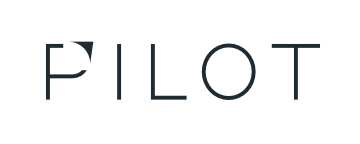What is Employee Development? 2024 HR Best Practices
If you’ve ever tended a garden, you know that nurturing your plants is a must. You could let them do their thing, and they might survive, but they will not thrive. Each plant needs proper care like water, sunlight, and good soil.
Employee development works in a similar way. It’s not just about planting seeds (hiring new talent). It’s about continuously tending to your garden (your talent pipeline), ensuring each plant gets what it needs to blossom.
But for HR leaders, the best practices for nurturing and cultivating talent aren't always readily apparent. Employee development practices continue to evolve rapidly. That’s why it’s vital HR leaders stay “in the know” about modern employee coaching approaches.
What is Employee Development in 2024?
At its core, employee development is a strategic, ongoing process dedicated to elevating individuals’ skills, knowledge, and abilities. Importantly, this development aligns with the overarching goals of your organization.
In its best form, it’s a two-way street. The organization invests in the employee, and in return, the employee contributes to the organization's success with increased capability and motivation.
The most strategic employee development programs in 2024 and beyond understand that the goal is not to just equip people with tools to succeed, but that they are trained to use them. That creates a workforce that’s resilient, adaptable, and ready for whatever obstacles are to come.
Understand the Importance of Employee Development Actions Over More Measurement
Beyond answering what is employee development and what it means in 2024, it’s important to also understand why it’s significant to your organization. Believe it or not, even the most seasoned HR leaders still have to justify proven programs and concepts to other members of leadership, despite their importance to an organization’s health.
You might be actively creating a diverse talent pipeline, but without proper communication to decision-makers, that positive action might go unnoticed or be undervalued. It’s essential to articulate the value and progress of these initiatives clearly. By doing so, HR leaders can ensure that their efforts in building a diverse talent pipeline are acknowledged. This recognition is crucial for securing ongoing investment in these employee development programs.
Another concrete reason is the impact employee development action has on improving low employee engagement scores, which research shows are still stagnant as we head into 2024. You might have an employee development program, but does it actually work? Success in this department is difficult to show. You must consistently work towards fostering a mindset of continuous improvement and adaptation. That leads to building employees that are visionaries, problem solvers, and leaders.
Use those employees as examples. Show their impact. Highlight their success. Build an aspirational culture.
Create a Scalable Employee Training Plan
Building a diverse pipeline requires creating a plan to support it long-term. Often HR leadership spends too much time measuring things they already know the answer to, rather than focusing on action. Both employees and company leadership can find themselves asking, “How many more surveys do we need to fill out before we see change?”
Don’t get caught on this treadmill of inaction. To unlock the full potential of employee development, create action points and a solid timeline. Concrete checkpoints lead to concrete advancements.
Start by identifying the core competencies and skills your employees need. Know where you are, where you need to go, and what tools will get you there. Then, integrate these with the individual aspirations of your employees. The plan should be adaptable and ready to incorporate new trends.
It gives you a competitive edge, too. According to a LinkedIn report, employee confidence in career development is declining around the world. That means if your company excels in this area, you can attract more diverse talent:
Via LinkedIn Market Research,
“WCI Career Development Index year over year, August 2023”
Remember, employee development takes many shapes and sizes, from formal sessions to informal mentorship to self-paced courses to instructor-led training. Implement metrics and regular assessments and reflections to track progress.
Depending on your organization, consider eLearning programs such as virtual coaching programs, especially if your employees are remote or hybrid. The way your business is set up should not hinder employee development programs.
Use These Employee Development Best Practices
Employee development requires an active pursuit of something greater. The constant movement towards development goals and efforts cultivates a thriving workforce poised for success.
That means knowing these best practices, which will help create a culture where learning is celebrated.
Encourage curiosity and experimentation, pushing your employees to learn on their own by providing them with tools and resources.
Utilize regular feedback loops, ensuring that development isn’t looked at as a “once a year” thing, but instead a consistent push and pull towards improvement.
Recognize and reward growth, understanding that it takes shape in different formats and that progress fuels further development and motivation.
In an environment like this, development becomes more than just training. Instead, it’s ingrained in the company’s DNA. You foster a workspace where every day is an opportunity to learn something new, to improve, and to take one step closer to greatness.
Be Proactive, Be Consistent, Be Successful
What is employee development but an opportunity for pushing your organization to a new level? To find success, you must work at it. That garden will not take care of itself.
Approach employee development similarly to how you approach other KPIs and goals. Move towards them. Enact policies that help everyone. Challenge yourself and your team to be the best version of themselves.
Forge a path in your organization where continuous learning is the norm and every employee’s growth story is championed. The success of your organization is directly tied to the growth of your people.
Ready to elevate your employee development strategy?
Learn how PILOT can transform potential into performance.

